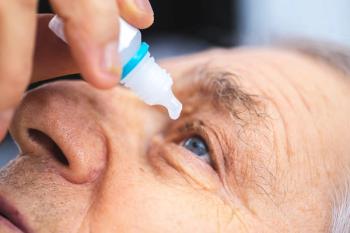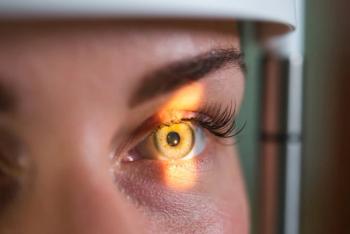
New research highlights how data is processed to detect glaucomatous optic neuropathy
Deep learning able to identify glaucoma, study shows
Over this past summer, I was fortunate enough to be given the opportunity to deliver a speech to the State University of New York (SUNY) College of Optometry residency class of 2019.
During this 20 minutes (which they likely perceived as just over an hour), I recommended that residents take a few moments and conduct a search of the world’s literature using the key words “deep learning” with the disease of their choice.
Conducting such a search myself gave me a better understanding of the likely direction of health care in my clinical lifetime.
A study recently published in JAMA Ophthalmology describes a deep learning system which appears to show high sensitivity and specificity for the detection of glaucoma.1Previously by Dr. Casella:
Deep learning
So, just what exactly is deep learning?
In the arena of artificial intelligence, this subset of machine learning is based on so-called “neural networks” that process data into concepts.
For instance, a clinician may instantly process all the pixels in a fundus photograph into what he judges as a diseased or healthy eye.
Deep learning systems are meant to conceptualize such data through complex set of algorithms and other analysis formulas.
Related:
Study design
As for the deep learning system described in the aforementioned study, fundus photographs were, indeed, the medium for testing the system.
The nature of the study was cross-sectional, and 241,032 images from 68,013 patients were ultimately included for the training of the system. The images came from the Chinese Glaucoma Study Alliance, the Handan Eye Study, and other databases.
Several “validation datasets” were also used in order to reflect the number of glaucoma patients within a population based on the known epidemiology of glaucoma as well as to provide an ethnically diverse cohort.
The images were entered into the various databases in 2009, and they were obtained and subsequently tested in 2018.
The optic nerve heads in the fundus photographs for the purpose of training the deep learning system were divided up into three categories:
Definite glaucomatous optic neuropathy (12.4 percent)
Probable glaucomatous optic neuropathy (4.6 percent)
Unlikely glaucomatous optic neuropathy (83 percent)
A remaining 28,569 images were used in the validation testing and evaluation of the system.
The sensitivity (identifying glaucoma) and specificity (identifying “not glaucoma”) of the deep learning system, through its use of fundus photographs and “glaucoma diagnosis with convoluted neural networks” or GD-CNN, were measured against professional graders.
Also by Dr. Casella:
Study results
As it turned out, the deep learning system performed quite well. The sensitivity and specificity of the system was 96.2 percent and 97.7 percent, respectively.
The most common cause for false positives and false negatives by both the deep learning system and the graders was high or pathologic myopia.
The authors state that these results show a propensity to enhance our current glaucoma screening modalities through time and cost efficiencies.
Related:
What this means
The potential implications of this concept are far-reaching.
One is increasingly less likely to have a conversation regarding the diagnosis of any disease without mention of technology. The eye and visual system are no strangers to this notion.
I would argue that the advent and subsequent bettering of technology has made our clinical lives easier-still challenging, but much easier.
The effective use of normative databases and progression algorithms with respect to spectral-domain optical coherence tomography (OCT) has given us highly reliable objective data which ODs can use as metrics for therapeutic efficacy (or to help ensure that no therapy is needed).
Deep learning systems will expand the horizon of how technology can aid in the diagnosis and staging of disease states. What an incredible time it is for ODs to be practicing.
Related:
It should be noted, however, that it is likely no mundane detail that the authors of this paper use the word “screening” in their description of potential applications for this deep-learning system.
The definitive diagnosis is the clinician’s to make.
One implication here is that clinicians will continue to make decisions more so than gather data. In the meantime,
I, for one, salute our new computer overlords.
References:
1. Liu H, Li L, Wormstone IM, Qiao C, Zhang C, Liu P, Li S, Wang H, Mou D, Pang R, Yang D, Jiang L, Chen Y, Hu M, Xu Y, Kang H, Ji X, Chang R, Tham C, Cheung C, Ting DSW, Wong TY, Wang Z, Weinreb RN, Xu M, Wang N. Development and Validation of a Deep Learning System to Detect Glaucomatous Optic Neuropathy Using Fundus Photographs. JAMA Ophthalmol. 2019 Sep 12. doi: 10.1001/jamaophthalmol.2019.3501. [Epub ahead of print]
Newsletter
Want more insights like this? Subscribe to Optometry Times and get clinical pearls and practice tips delivered straight to your inbox.









































